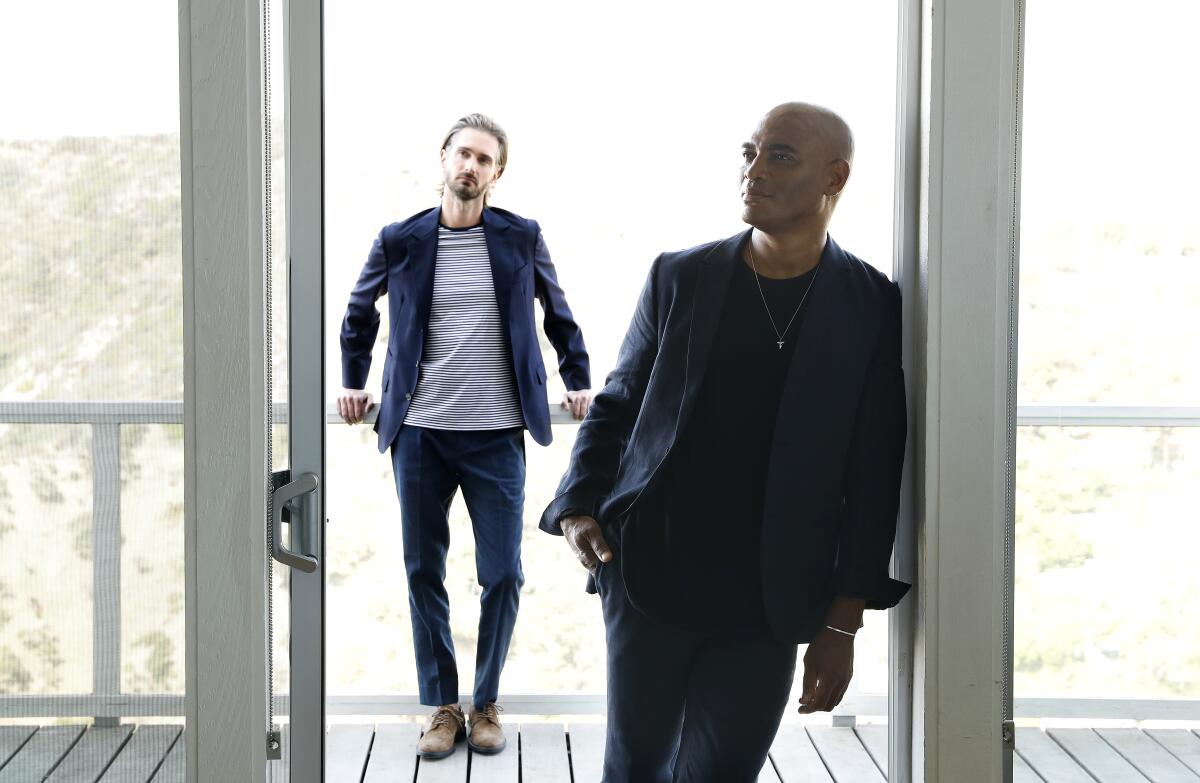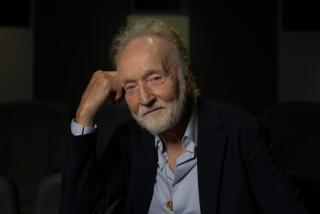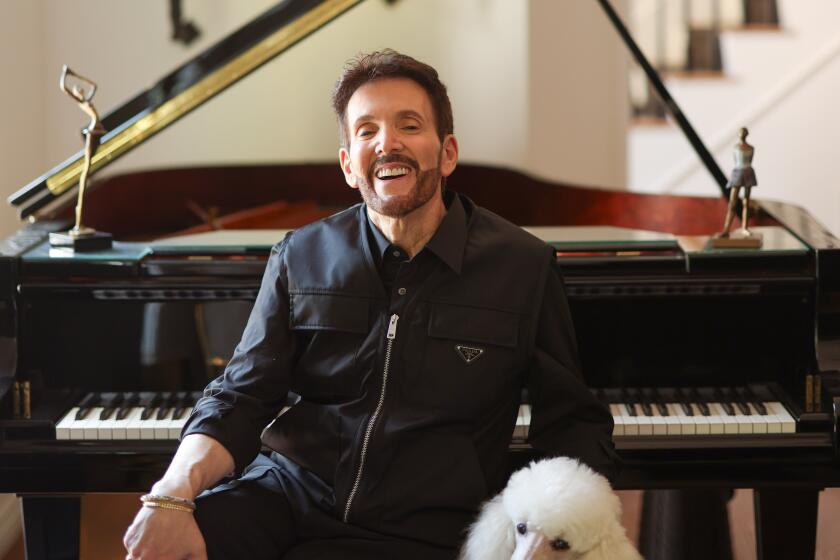‘Antebellum’ is mostly set on a plantation. But the directors reject the label ‘slavery horror’

For first-time feature filmmakers Gerard Bush and Christopher Renz, the process of bringing Lionsgate’s “Antebellum” to life was quite literally the stuff of nightmares.
The psychological thriller, which was written and directed by the longtime directing partners, stars Janelle Monáe as Veronica Henley, a successful author in contemporary times, and also as Eden, a long-suffering slave in the antebellum South. The women live seemingly opposing existences, but a surprise twist reveals itself in the film’s third act.
The story, which came to Bush in a dream following the sudden and unexpected losses of his father and best friend, felt “seeded by the ancestors,” he said by phone before the film’s Friday PVOD release.
“I’ve never thought of myself as a New Age person,” he said. “But this felt really up close and intimate, it felt ancestral. I’m categorizing it as a nightmare because I was asleep and I was in a dream state, but it felt like I was receiving.
“The star of the dream was this woman, Eden. And she was so desperate to reach help and to escape her tormentor that it felt like she was screaming across dimensions. That’s the only way I can describe it.
“The nightmare was essentially ‘Antebellum,’” he added. “Most of the details that you see in the movie are from the nightmare. [That night I woke up] and took notes in the notepad on my phone. And the next day, Christopher and I put pen to paper and wrote a short story.”
“Antebellum” marks the duo’s feature film debut after spending the last decade directing luxury advertising campaigns and short films centered around social justice issues. Despite the film’s arrival on the heels of racial unrest and a historic pandemic (and its last-minute pivot to a digital release after a planned theatrical run was postponed twice), the directors believe that the timing couldn’t be better.
“We did create the movie to be experienced in a theater, as a communal experience,” said Renz. “And we did push the date a couple times to try to keep the movie in theaters. But it got to a point where we either would release the movie now in this time or wait until sometime later in 2021.
“We felt that this movie has something to add to the conversation that America is having right now and PVOD was the best option for that. But if one person got sick or worse just because they wanted to see our movie, that’s not something that we could live with. So we felt that this was the best way for it to be released.”
For Bush, the film feels “fated.” “It feels like the story has its own life,” he said. “One perfect example is, when the movie was re-dated by the studio for Sept. 18, unbeknownst to us at the time, that day falls on the anniversary of the Fugitive Slave Act of 1850. And so that gave us even more comfort in knowing that perhaps the film has a journey of its own and we’re just supposed to be responsible stewards in protecting it and letting it get out to the world.
“It’s funny, I used to think that the racial reckoning was just adding insult to injury with the global pandemic. But what I’ve since realized is that it made the ground that much more fertile for this awakening that we experienced this summer.”
Though more than 50% of the film takes place on a plantation, the filmmakers and its star bristle against categorizing it as a slavery movie.
“I just think that it’s reductive for us to say, ‘Well, it’s slavery horror,’” said Bush. “It’s not that. What we’re talking about here is a new genre-bending of historical horror. Yes, there’s the slavery portion of it. But I think what one should really be looking at is, we’re experiencing this from the perspective of this Black woman and what this world looked like and the casual cruelty that was enabled by this collective agreement.”
“I think this film does a remarkable job of connecting the dots from past to present and what the future could look like,” said Monáe. “We’re in the middle of a revolution right now and I’m just grateful to have a film that will keep the conversation going and reminding folks that when we’re talking about racist policies, a lot of these policies started during that era when our ancestors were stolen. I’m just thankful that Chris and Gerard put together a film that allowed us to humanize the Black woman and show on a global level what it’s like for Black women to dismantle white supremacy and carry that burden on our backs every day.”
“If you would have told me three or four years ago that I would be telling a story about slavery, I would have told you that you were smoking a new kind of rock,” said Bush. “That’s just not something I would ever have imagined because those weren’t stories that I was comfortable with seeing. Seeing people that look like me, that quite frankly were me, in chains and bondage was not something that was very easy for me to sit through.
“I think that when the nightmare was seeded to me and we wrote the short story and then the script, it gave us a way in that felt appropriate for us. By recontextualizing the country’s original sin, it shifted the perspective for us to strike an empathetic chord.”
“We understand the fatigue that is felt around films with slavery narratives,” said Renz. “At the same time, we understand that no one would ever plan to have a wedding at Auschwitz. Yet for some reason in America people feel that there’s no issue with planning a huge celebration on a plantation. And so obviously we feel there has not been enough education. Certain people do not understand and they have not gotten it yet.”
In bringing his nightmare to the screen, Bush hopes to “push people into conversation and from conversation into action.”
“We have to be really vigilant in making sure we don’t participate in the erasure of our own history,” he said. “Because what happens is, before you know it, slavery never happened. And that might seem far-fetched, but with the current environment of misinformation and the erasure we’re already seeing in history books, it’s really important that we correct the record.”
“‘Gone With the Wind,’ for instance — I find that movie to be a horror film and really insulting to Black people,” he added. “I saw a young Black woman in an interview a year or two ago and she was talking about how she always pictured herself as Scarlett and she said it without even a hint of irony. That’s what a job it has done on all of us. And so it was really important to us to say, ‘Well, let’s show slavery through the prism of horror and let’s have stunning, breathtaking beauty live in the same space, which makes the horror all the more horrific.’”
Bush was so incensed by the 1939 film that he hunted down the lenses used to shoot it “and rebuilt our cameras to shoot ‘Antebellum’ with the same lenses that were used to shoot ‘Gone With the Wind.’” “We were determined to correct the record with the same weaponry that they used to misinform with really effective, beautiful propaganda,” he said.
“Our intention for the film is to serve as a prescription, a medicine, a catharsis. It’s really important that we get to a place in this country where we have the courage and the determination to confront our past, specifically this country’s original sin, if we have any hope of living in the present without being haunted by the past. And very possibly seeing our shared future robbed of all of us. I think our hope is that it activates people into action.”
More to Read
Only good movies
Get the Indie Focus newsletter, Mark Olsen's weekly guide to the world of cinema.
You may occasionally receive promotional content from the Los Angeles Times.











